Kershaw Covalent Model 2042 is a 7.6” pocketknife with a blade length of 3.2”, blade thickness of 0.107”, handle length of 4.4” with a handle thickness of 0.49”. Its blade material consists of D2, and handle material is Glass-Filled Nylon (GFN). It comes with a fine finishing of black-oxide black wash coating.
Kershaw knives is an American knives company based in Portland, Oregon. Founded in 1974 and owned by the KAI group, it moved its headquarters to Tualatin, Oregon in 2003, but still manufactured most of its knives in Portland. It outsources some of its cheaper knives to China and Japan.

Not only does Kershaw produce folding knives and pocketknives, but also fixed blade knives, kitchen cutlery, sporting knives and tactical knives.
The Kershaw Covalent is a latest release of the year 2023 with upgraded parts and quality checks. It is one of a kind.
Kershaw Covalent Review
You can call it a mid-sized folder knife with drop point plain edge blade with DuraLock Type and Manual KVT Ball Bearings just like Kershaw Knives has them in Kershaw Lucha – a butterfly knife for the opening action across the steel crossbar.
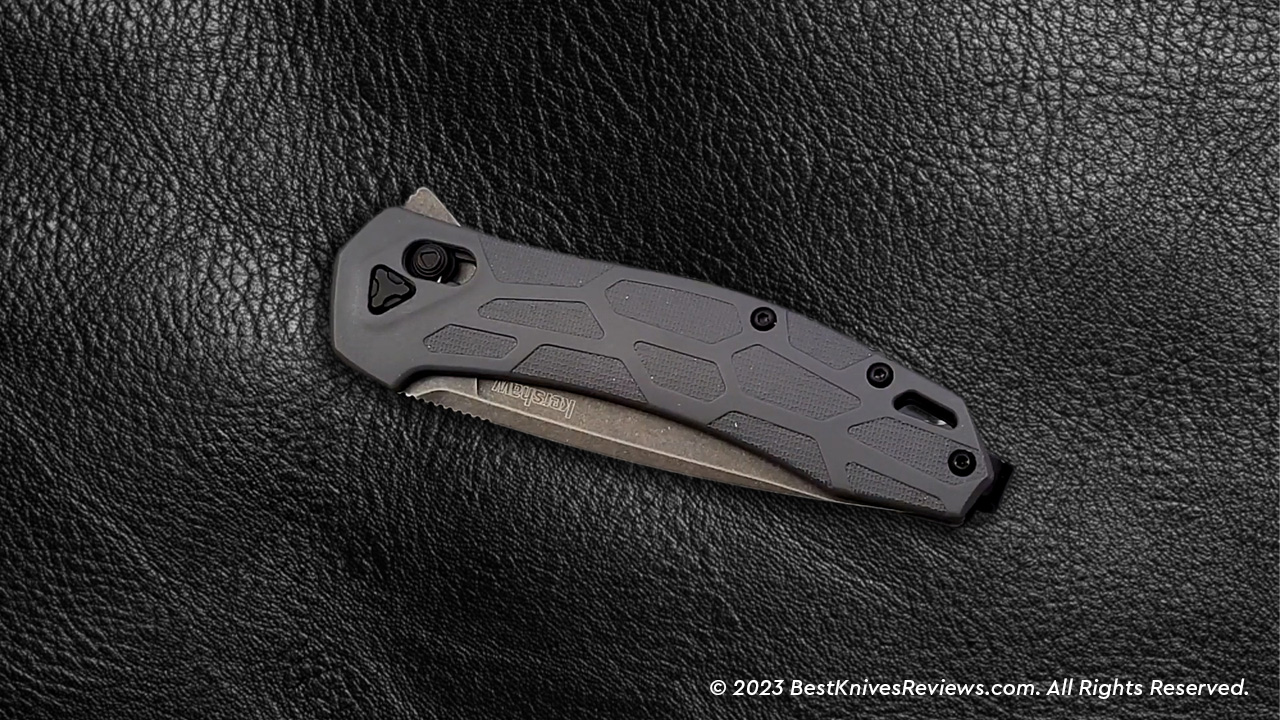
It also comes with an ambidextrous reversible deep-pocket carry pocket clip with black-oxide finishing and black-oxide screws. Its texture is quite smooth and attractive and deploys a flipper on the ball bearings.
Kershaw Covalent Prices |
||
|---|---|---|
 |
 |
Check Price at Blade HQ |
 |
Check Price at Chicago Knife Works | |
Key Specifications of Kershaw Covalent
D2 Blade of Kershaw Covalent
The D2 tool steel or semi-stainless steel falls short of chromium but has relatively high carbon levels. It makes the blade corrosion-resistant (although not as much as other tool steels), harder than other tool steels, such as 154CM or ATS-34, and has high edge retention.
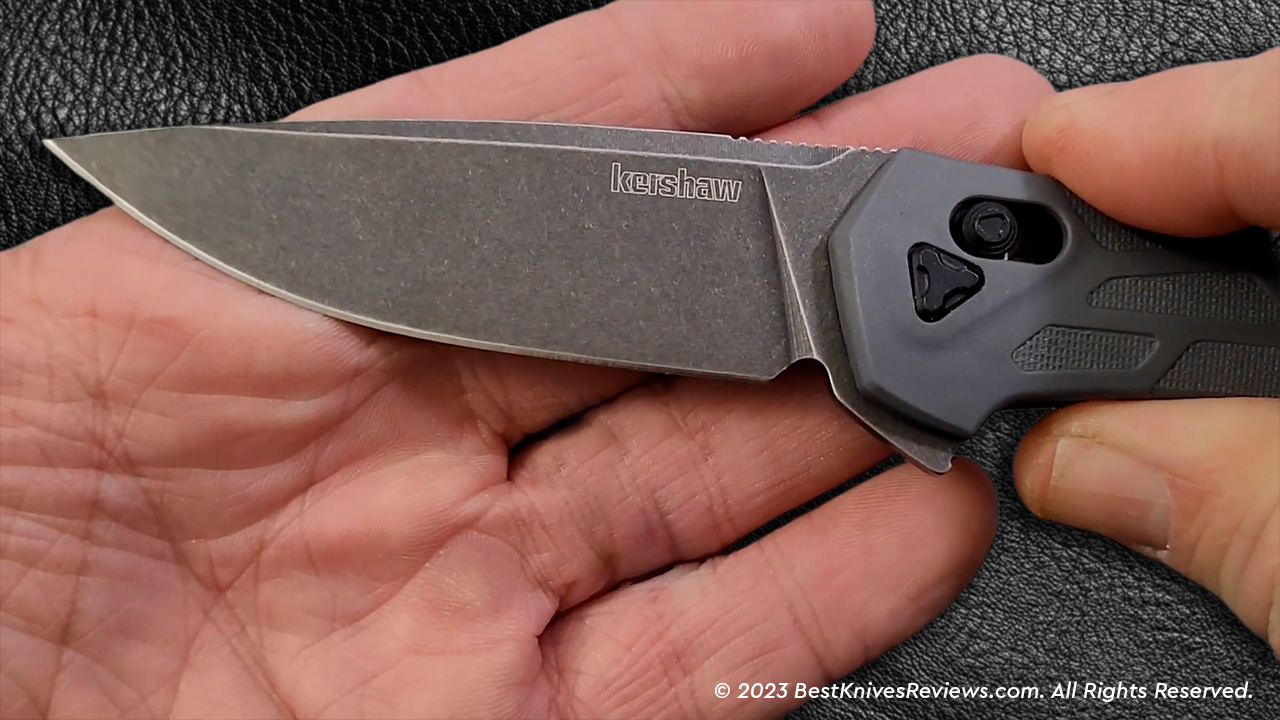
However, it is not too tough and harder to sharpen. You may need to get it professionally sharpened to get the most out of the D2 on Kershaw Covalent.
You can expect this steel to hold an edge longer than 14c28n or 8Cr steel. The stonewash finish and the black-oxide coating also protects the blade from visible scratching, even though it can easily get chipped or stained. It also protects the blade from rust.
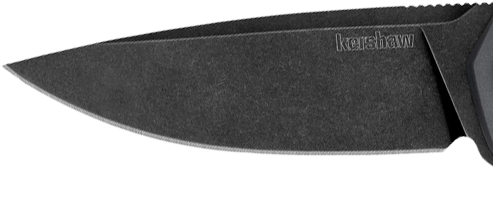
The blade thickness of 0.107” also has a part to play in this. It is thinner than what you would expect from a mid-tier EDC knife.
The pointed edge of the blade along with the edge retention makes it a good knife for piercing and punching holes through paper and cardboard, or while cutting open packages and boxes for EDC. The 3” cutting edge is a deep enough edge for such tasks. The edge also helps in making sharp precision cuts while cutting fruits and vegetables.
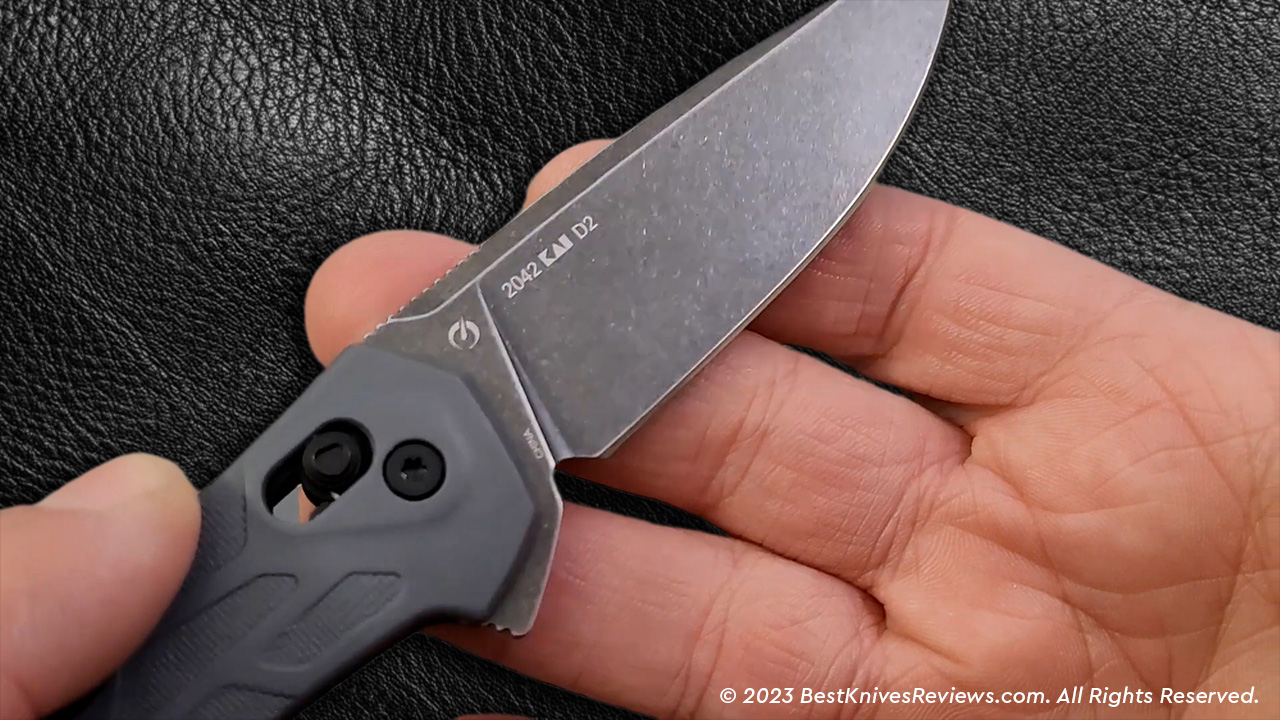
I also like that the full-flat grind goes all the way to the spine with a shallow edge running along the top of the blade towards the tip and towards the blade tang.
The surface area of the blade is also quite enough for EDC tasks. The sharpening choil, in addition, gives the belly of the blade some depth. It may be too far back towards the blade edge, but has evenly-spaced jimping on the spine, but has no thumb rack for a forward finger choil.
The Glass-Filled Nylon (GFN) Handle of Kershaw Covalent
The Glass-Filled Nylon is a slight variation the Fiberglass Reinforced Nylon (FRN) often used as knife handles. It is durable, flexible and shatter resistant.
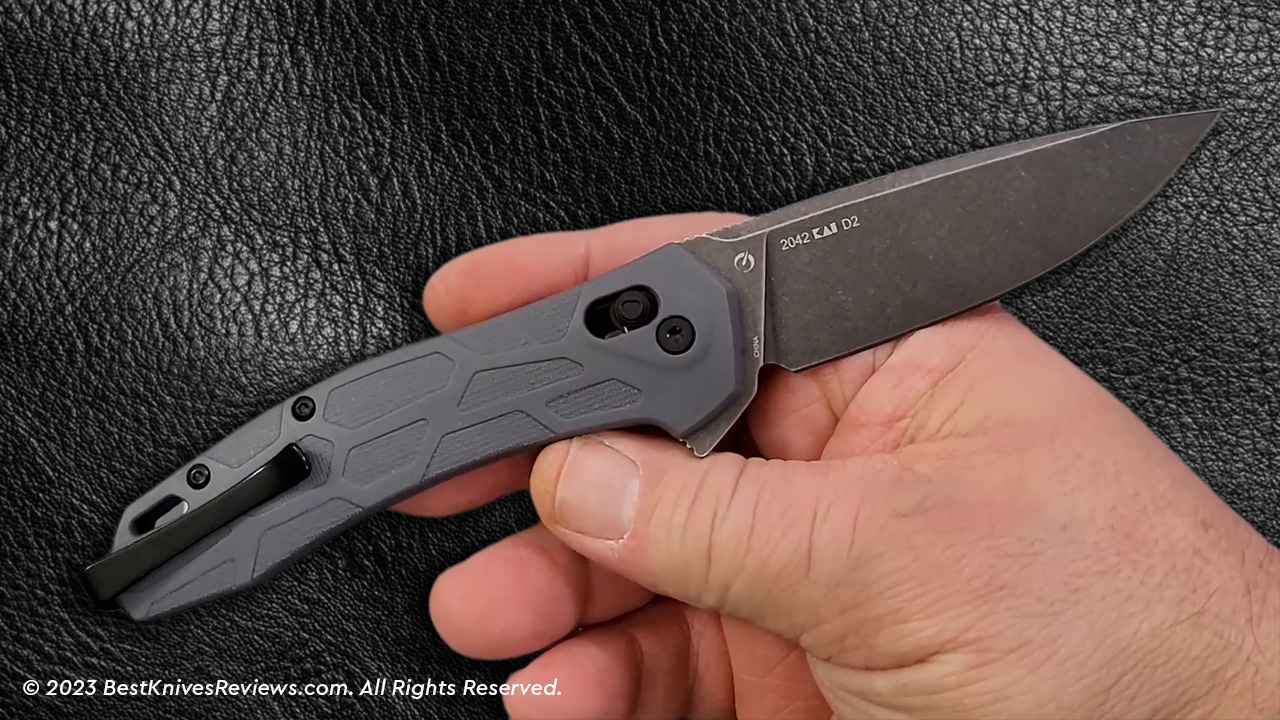
It comprises of slightly shorter glass fibers in nylon polymer mix injection-molded into a plastic handle. It makes the handle tough, yet smooth and soft to touch. You can also hold it with wet or sweaty hands, or while wearing gloves.

It is screwed and bolted on both sides with Torx T6 along its body and pocket clip screws, making it perpendicular to the blade when open. It uses Torx T8 for pivot tension adjustment to make it stay in place while being smooth in action. It also enables the knife to stay its pivot fixed position, ready for use.
The handle has non-skeletonized stainless steel liners inside that hold the blade in a perfectly straight position, so that there is no blade play.
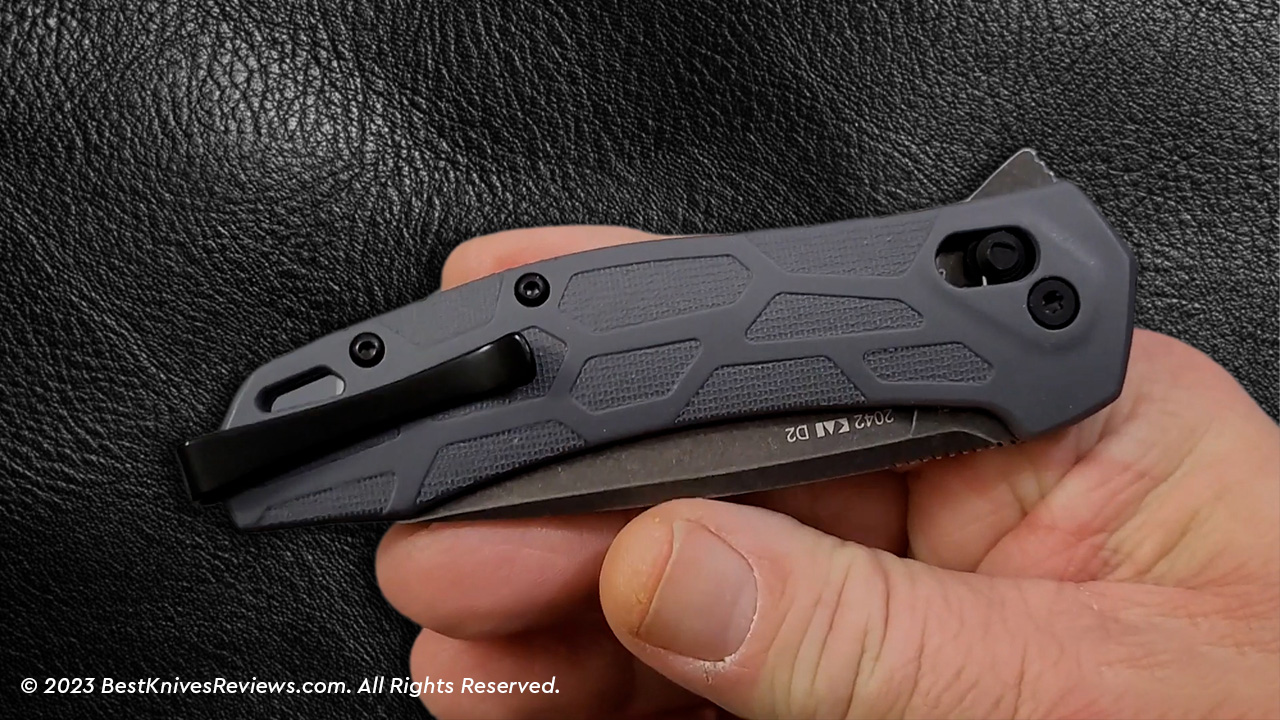
Deployment & Lockup of Kershaw Covalent
The flippers and sliding bar locks typically do not go hand-in-hand. But the Covalent’s flipper deployment has come a long way with short forward jimping on the surface for traction with a simple push-button style that goes all the way downward and inward. That makes the deployment very smooth, flexible, and comfortable.
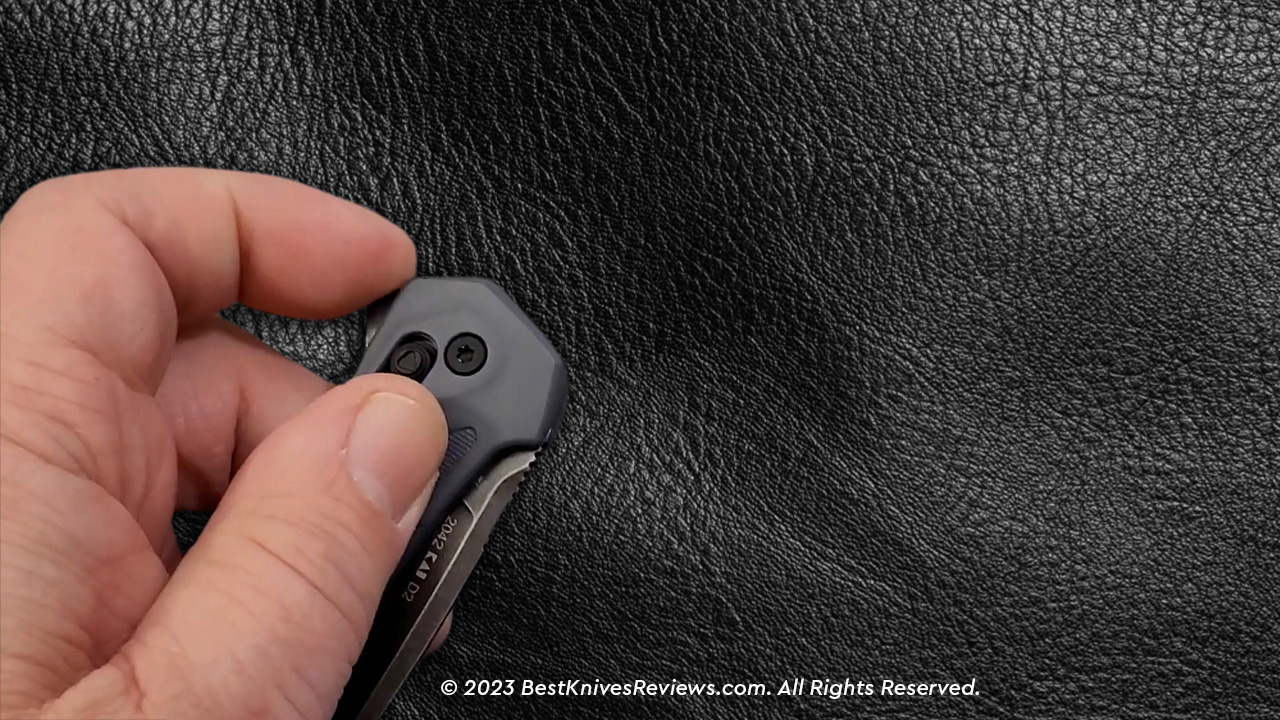
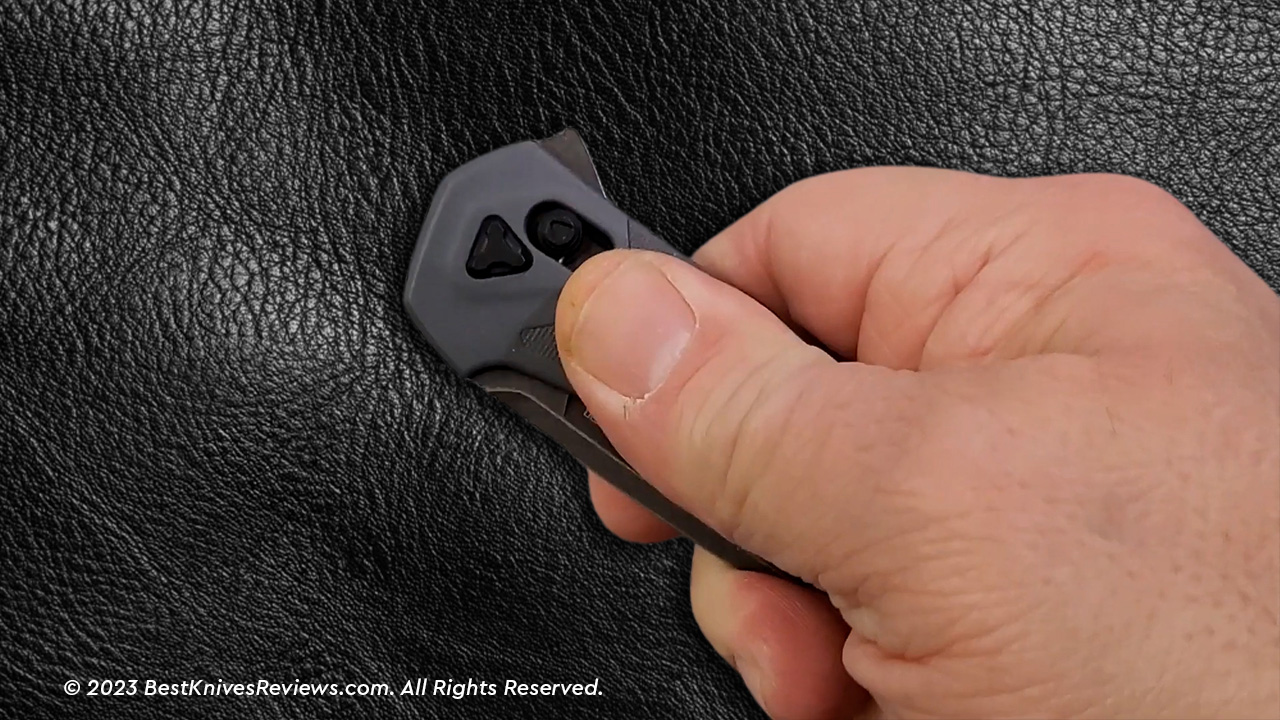
It also has a strong closed detent with KVT caged ball-bearings, which makes for a strong deployment as well. The DuraLock or crossbar uses the spring on both sides to push the bar forward over the tang to push open the blade and then in a closed position. The external stop pin supports this action located in both positions of the blade.
The locking mechanism is smooth with no blade play whatsoever. It is also safer than a simple liner lock, since you can swift the blade back in position with a single swift motion. The ball bearings in the knife fall shut easier with drop-shut pivot and a strong detent.
Field Test of Kershaw Covalent
The Kershaw Covalent was relatively easier to handle and manage in comparison to Spyderco LionSpy and SOG Termnius XR, mainly because its profile is better. The thin profile combined with lightweight and textured scales made it really easy to handle.
The length of the knife was also quite ample to hold with an entire hand comfortably without any edges protruding out and pinching into the hand. The edge was also easy to use when slicing and dicing vegetables and fruits without the knuckles knocking down on the surface. It was also comfortable to hold and slip-free when using it wet or with sweaty hands.
It was completely slip-proof. We also used it while wearing gloves, and we think that the size the knife was better suited for gloved hands.
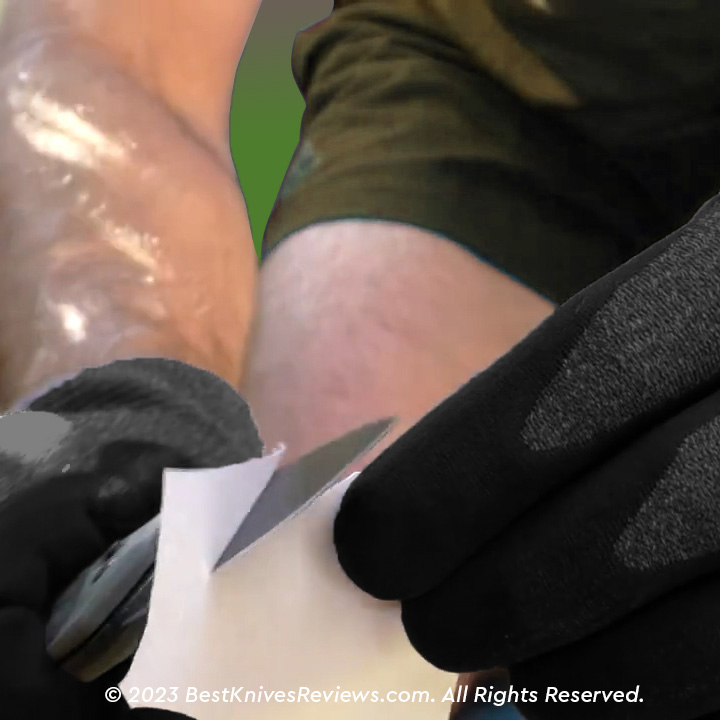
The paper cutting action was extremely smooth and precise. One move of the hand, and it will slice curves through the paper. We also tried cutting stacks of paper without any trouble.
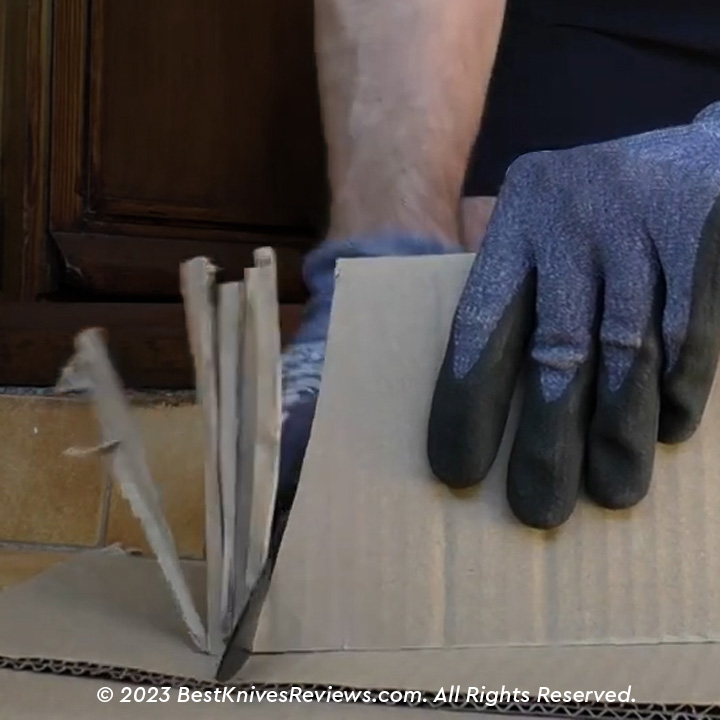
Next we tried cardboard cutting. Here again, the task was completed without any hitch. However, it did make curved cuttings where we wanted smooth and straight lines. The knife can be too sharp and too fast, so we had to use it carefully. Otherwise, it may cut the cardboard on its own and fly away.
Therefore, we tried stacking the cardboard sheets and then sliced them up together. As expected, this task carried out better than a single sheet of cardboard. A stack of six sheets required some cutting effort, but the knife performed smoothly.
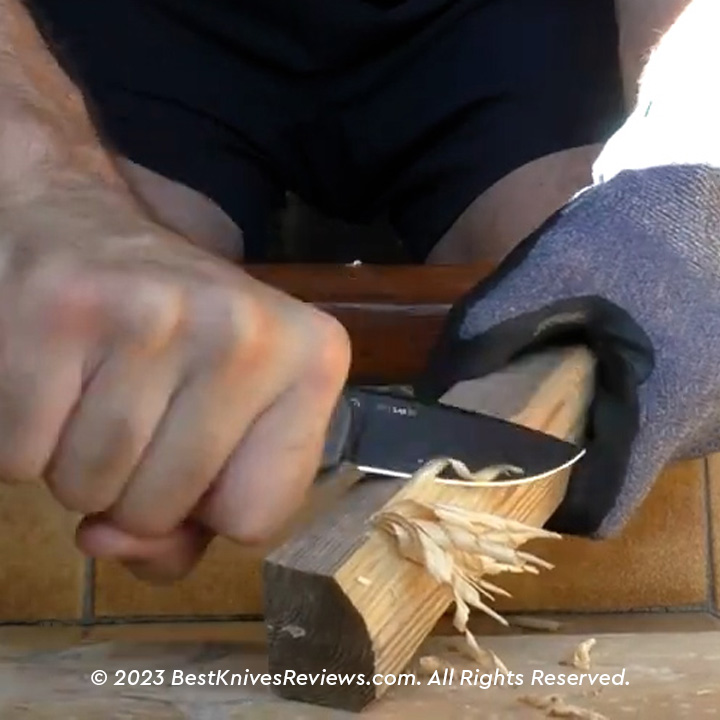
Next, we made the edges of a small wooden stick smooth by slicing into it and chipping wood chips. We were able to make the edge smooth with minimal effort. The D2 blade performed perfectly and better than our expectations. Here too, the handle remained intact and durable. It did not get too dirty too soon and we were able to chop off the wooden stick easily. Although it did require some sharpening after chipping the dry wood stick for a considerable amount of time.
Then, the knife required some cleaning and washing before it could be used again. It was now covered in cardboard chips and wooden chips. The knife does not perform well when its dirty and sticky.
The performance of Kershaw Covalent was above and beyond what you would expect from a knife at this price. Therefore, I would say that it is a good bargain knife, which is the latest model of Kershaw, and definitely worth it in performance, blade sharpness and handle ergonomics.
Comparisons
Comparing Kershaw Covalent Vs SOG Terminus XR Folder
Even by looking at the two knives, we can see the stark similarities between them. They both have the same profile, blade shape and length. Although their blades and handle materials are different, their retail prices are the same.
However, Terminus XR is wider and slightly heavier than the Kershaw Covalent, but has a choice between thumb studs and flipper for the opening action or deployment. Otherwise, both have the same deep-pocket carry ambidextrous pocket clip with a fine finishing.
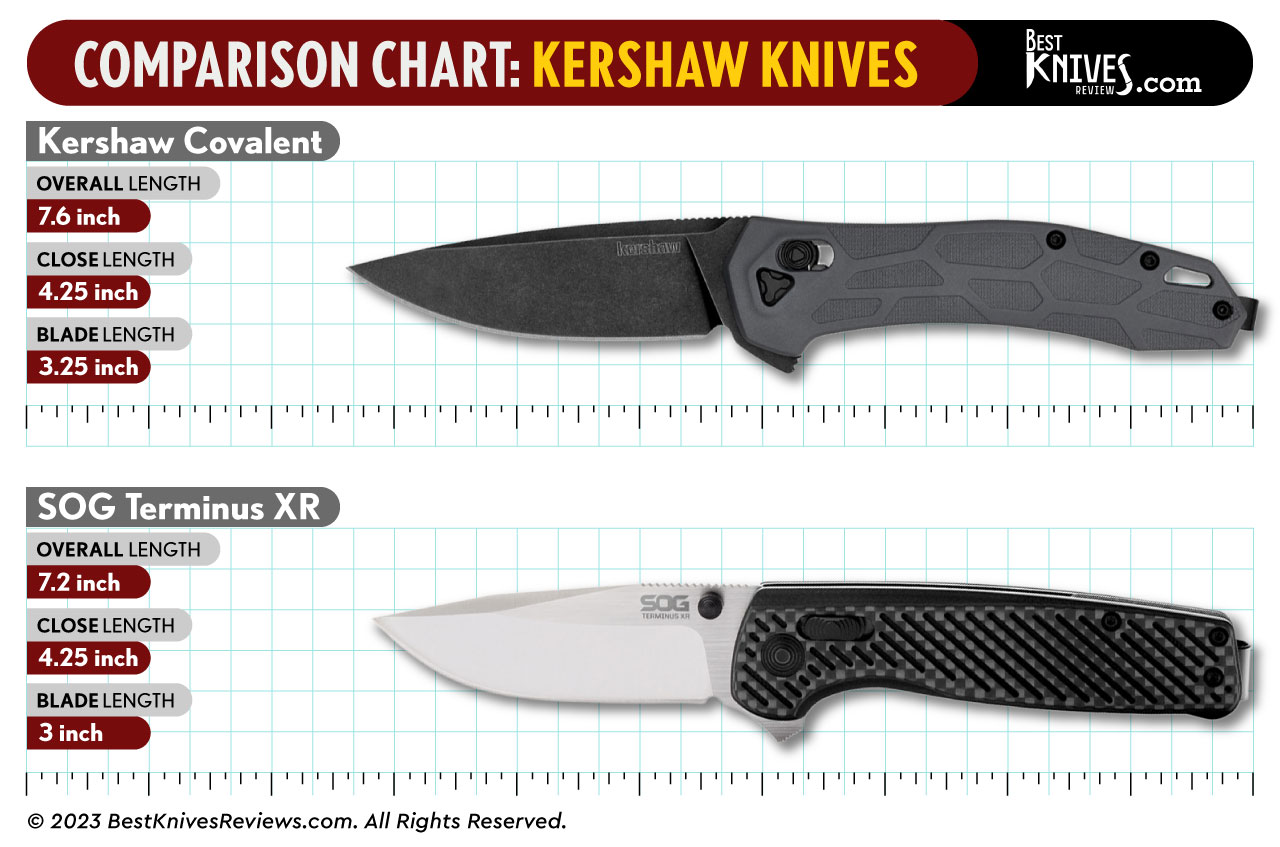
However, the SOG Terminus XR has better handle material as it is reinforced with G10 over carbon fiber coating. That makes the scales far more textured and contoured, not to mention more slip-free. It also does not require as regular cleaning as the Covalent does. Moreover, the CTS-BDZ1 may be a better blade steel with only slightly more thickness. But we cannot be sure until we fully review and test it.
As far as I can see, both the knives are excellent EDC performers at relatively same price point and knife materials. Choosing between the two may be hard.
SOG Terminus XR Lock Black Knife Prices |
||
|---|---|---|
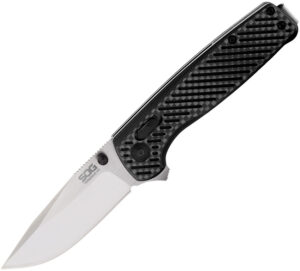 |
 |
Check Price at Blade HQ |
 |
Check Price at Chicago Knife Works | |
Kershaw Covalent vs Gerber Highbrow Flipper
Gerber Highbrow is a flipper knife and very much similar to Kershaw Covalent in profile, size and composition. However, the steel blade of the Gerber Highbrow, 7Cr17MoV, is not that better off than the D2 in performance, edge retention and corrosion-resistance.
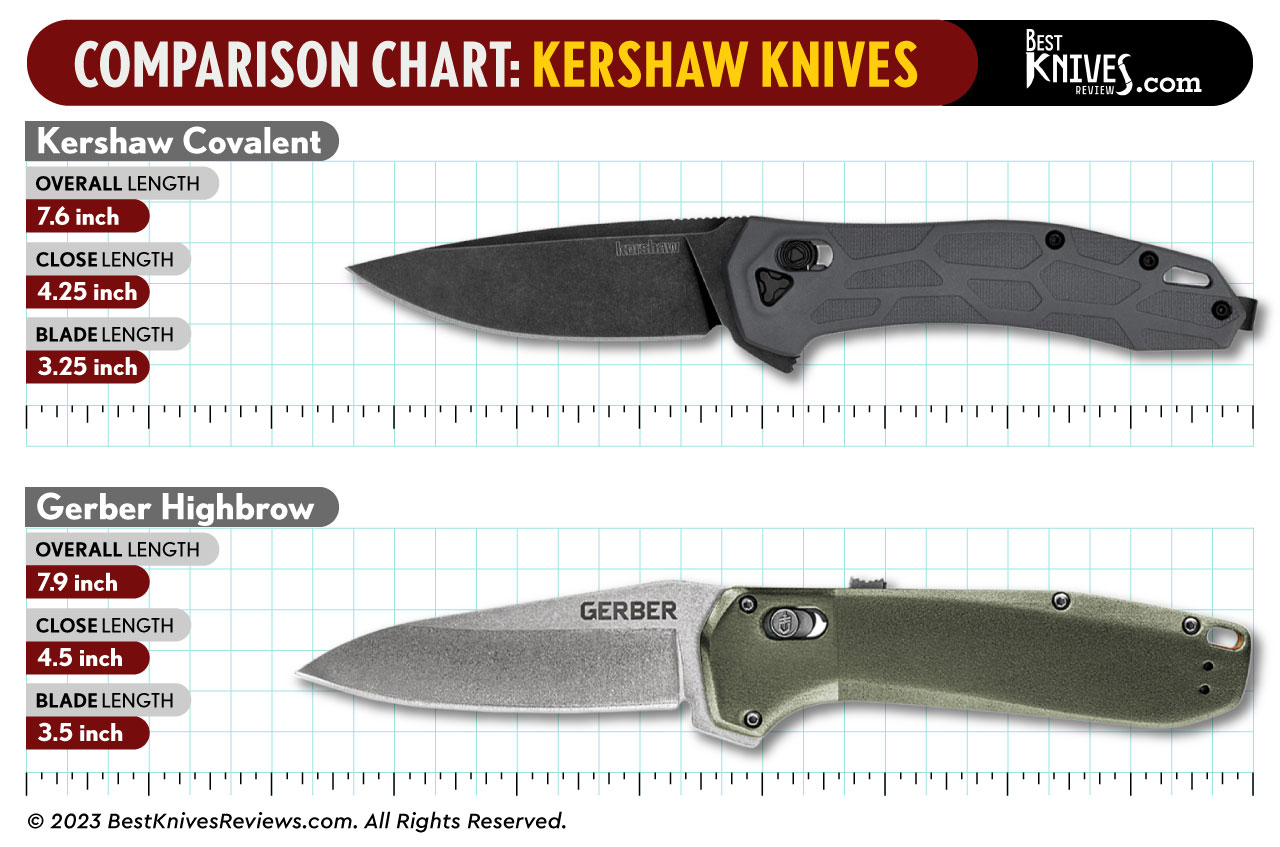
Gerber Highbrow is a flipper knife and very much similar to Kershaw Covalent in profile, size and composition. However, the steel blade of the Gerber Highbrow, 7Cr17MoV, is not that better off than the D2 in performance, edge retention and corrosion-resistance.
Moreover, it is heavier than Covalent, mainly because of its handle composition (aluminum) and design. Its blade grind is also chunky and thicker, which is too much for an EDC knife. It also comes with assisted opening, which can be a turn-off if we are used to a lockup mechanism.
Therefore, Kershaw Covalent comes on top when comparing with Gerber Highbrow
Gerber Highbrow Prices |
||
|---|---|---|
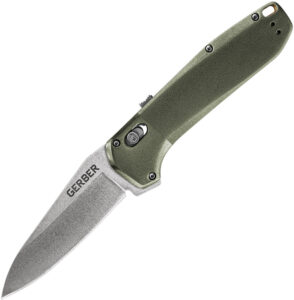 |
 |
Check Price at Blade HQ |
 |
Check Price at Chicago Knife Works | |
Pros & Cons of Kershaw Covalent
PRO’s
Con’s
Conclusion of Kershaw Covalent Review
As per Kershaw Covalent’s review, you may find it quite compelling and a knife that delivers on its promises. It was able to hold up its initial impression.
And the price is a good bargain when we compare it to its performance. The D2 blade did not disappoint, and the GFN handle scales turned out to be quite well-textured and contoured with rounded edges and easy to hold with a comfortable grip.

The field test went without a hitch. There was only some cleaning required with sharpening the blade once throughout, which shows that the knife is able to hold its edge for quite some time. Therefore, we would recommend Kershaw Covalent as a good EDC knife.
